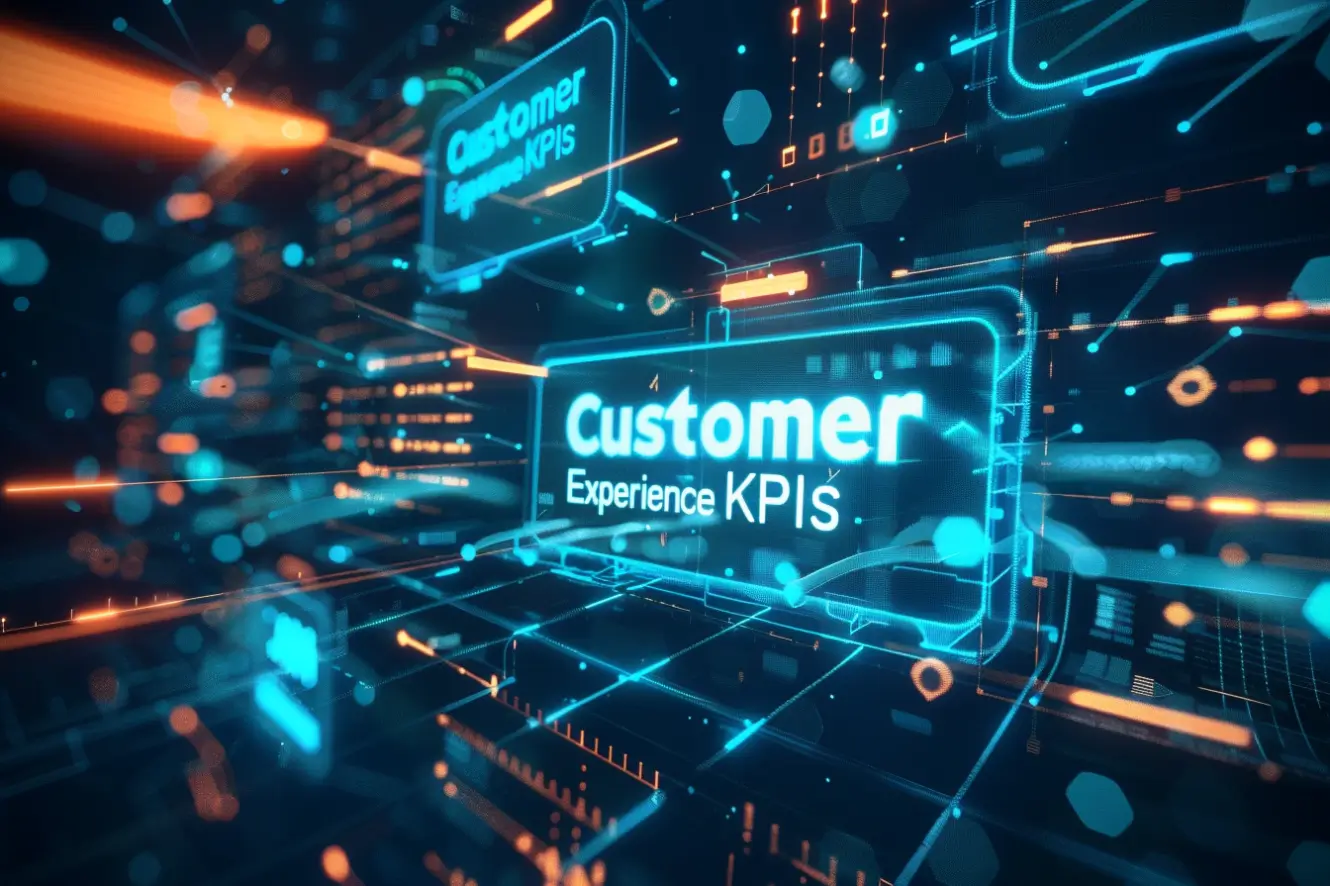Imagine a scenario where every tweak and change to your business operations could almost guarantee a surge in customer loyalty and profits. This isn’t just a daydream for forward-thinking companies; it’s a reality driven by effectively monitoring customer experience KPIs.
A striking statistic from Forrester reveals that businesses prioritizing customer experience surpass their competitors by nearly 80% on the S&P 500 index. By delving into the core metrics that gauge the pulse of customer interactions, organizations not only understand what keeps customers satisfied but also discover innovative ways to elevate the entire customer journey.
This article will guide you through the most crucial KPIs that can transform insights into action, ensuring your business thrives in an era where customer satisfaction is paramount.
Preface: This article diverges from our usual focus on Epilogue Opus, our digital adoption platform. We occasionally like to explore diverse subjects to provide interesting insights and perspectives. We appreciate your readership.
What is Customer Experience?
Customer experience refers to the perception customers have of a brand throughout all their interactions. This includes every touchpoint from navigating the website, communicating with customer service, purchasing a product, to post-purchase support. A positive customer experience leads to higher customer retention, increased loyalty, and better word-of-mouth marketing.
Exploring the Core of Customer Experience KPIs
Customer Experience KPIs (Key Performance Indicators) are quantifiable metrics that track various aspects of the customer journey. By monitoring these KPIs, businesses gain valuable insights into customer satisfaction, loyalty, and effort required to resolve issues. Effectively using CX KPIs allows businesses to identify strengths and weaknesses in their customer experience strategy, ultimately leading to happier customers and a thriving business.
Top 10 Customer Experience KPIs You Should Be Tracking
When tracking CX KPIs, companies should align their strategies to enhance customer satisfaction, optimize operations, and ultimately drive growth. Here are 10 key customer experience metrics you should consider tracking:
1. Net Promoter Score (NPS):
NPS measures customer loyalty based on one simple question: “On a scale of 0-10, how likely are you to recommend our company/product/service to a friend or colleague?” Responses are categorized into Detractors (0-6), Passives (7-8), and Promoters (9-10). The score is calculated by subtracting the percentage of Detractors from the percentage of Promoters. NPS provides a quick gauge of customer satisfaction and loyalty, and is often correlated with revenue growth potential.
2. Customer Satisfaction Score (CSAT):
This score is derived from asking customers to rate their satisfaction with a service, purchase, or interaction, usually on a scale (such as 1-5 or 1-10). The CSAT score is the average of all responses. It’s crucial for identifying how products or services meet or exceed customer expectations at specific touchpoints and can inform improvements in products and services.
3. Customer Effort Score (CES):
CES asks customers to rate the ease of their experience with a company, typically after an interaction with customer support or completing a transaction. “How easy was it to handle your request?” is a common CES question, rated on a numerical scale. Companies use CES to streamline operations and reduce customer churn by identifying processes that need simplification.
4. Customer Churn Rate:
Churn rate is the percentage of customers who stop using your service over a given period. It is calculated by dividing the number of customers lost during the period by the total number at the start, multiplied by 100. Reducing churn is critical for maintaining revenue and growth, making this KPI vital for understanding customer retention success.
5. Customer Lifetime Value (CLV):
CLV estimates the total revenue a company can expect from a single customer account throughout the business relationship. It considers average purchase value, purchase frequency, and customer lifespan. CLV helps businesses develop strategies to acquire new customers and retain existing ones by comparing the potential revenue to the costs of acquisition and retention.
6. First Response Time:
This is the average time it takes for a company to respond to customer inquiries. Measured from the moment a customer makes contact (through any channel) to the first reply received, this KPI is crucial for customer satisfaction, as quicker responses can significantly enhance customer perceptions of a company.
7. Average Resolution Time:
This measures the average time taken to resolve customer issues after they have been reported. It’s an indicator of the efficiency of customer support services. Faster resolution times typically lead to higher satisfaction rates and can contribute to lower churn rates.
8. Conversion Rate:
This metric measures the percentage of visitors to your website (or other customer touchpoints) that complete a desired action, like making a purchase or signing up for a subscription. Conversion rate is essential for gauging the effectiveness of marketing and sales strategies, indicating how well your company converts interest into action.
9. Social Media Sentiment Analysis:
This involves using tools to analyze the tone, context, and frequency of mentions about your company on social media. This KPI helps businesses understand public perception, manage their brand image, and respond to trends or issues in real-time.
10. Repeat Purchase Rate:
This metric shows the percentage of customers who return to make additional purchases. High rates indicate strong customer loyalty and satisfaction with the product or service. It’s essential for assessing the effectiveness of customer retention strategies and the overall satisfaction with your offerings.
Tools for Tracking Customer Experience KPIs
To effectively measure and manage the customer experience KPIs outlined, businesses leverage a variety of tools. These tools not only simplify the collection and analysis of data but also provide actionable insights to improve customer experience. Here are some key tools commonly used across industries:
1. Customer Relationship Management (CRM) Software:
Platforms like
Salesforce,
HubSpot, and Microsoft Dynamics CRM offer comprehensive tools for tracking interactions with customers, managing customer information, and analyzing customer behavior. These systems can help in calculating KPIs such as CLV, conversion rate, and customer churn.
2. Customer Feedback Tools:
Services like SurveyMonkey, Qualtrics, and Google Forms allow businesses to design and distribute customer satisfaction surveys efficiently. These tools are essential for gathering data needed to calculate NPS, CSAT, and CES.
3. Analytics and Data Visualization Software:
Tools such as Google Analytics, Tableau, and Adobe Analytics provide powerful data analysis capabilities. They help in tracking online customer interactions, analyzing website traffic, and understanding user behavior, crucial for measuring metrics like first response time and average resolution time.
4. Social Media Monitoring Tools:
Platforms like Hootsuite, Sprout Social, and Brandwatch are invaluable for tracking social media sentiment and engagement. These tools analyze mentions, hashtags, and keywords related to your brand, providing insights into public perception and customer satisfaction.
5. Customer Support and Engagement Platforms:
Tools like Zendesk, Freshdesk, and Intercom offer ticketing systems and live chat options, making it easier to track first response times and resolution times. They help improve customer service processes by streamlining communication and managing customer queries efficiently.
In Conclusion
Employing these top 10 customer experience KPIs will not only help you measure the effectiveness of your customer service efforts but will also provide crucial insights into how you can improve. Businesses that thrive on customer-centric strategies see marked improvements in customer loyalty and revenue. Start tracking these KPIs today to transform your business approach, align with customer expectations, and drive substantial growth.








